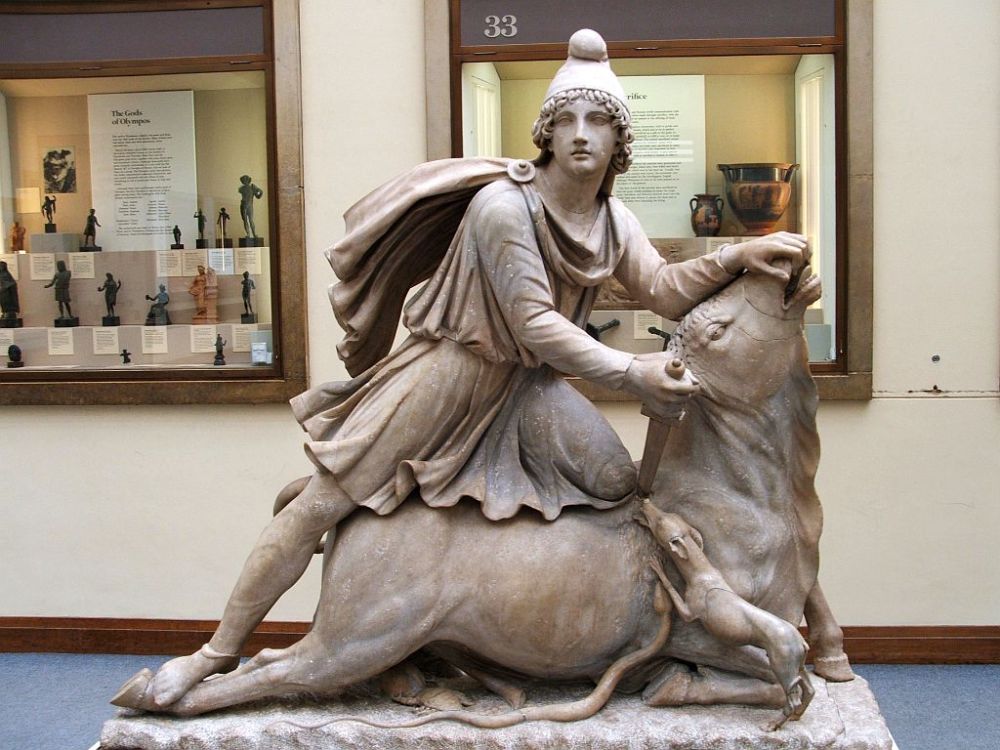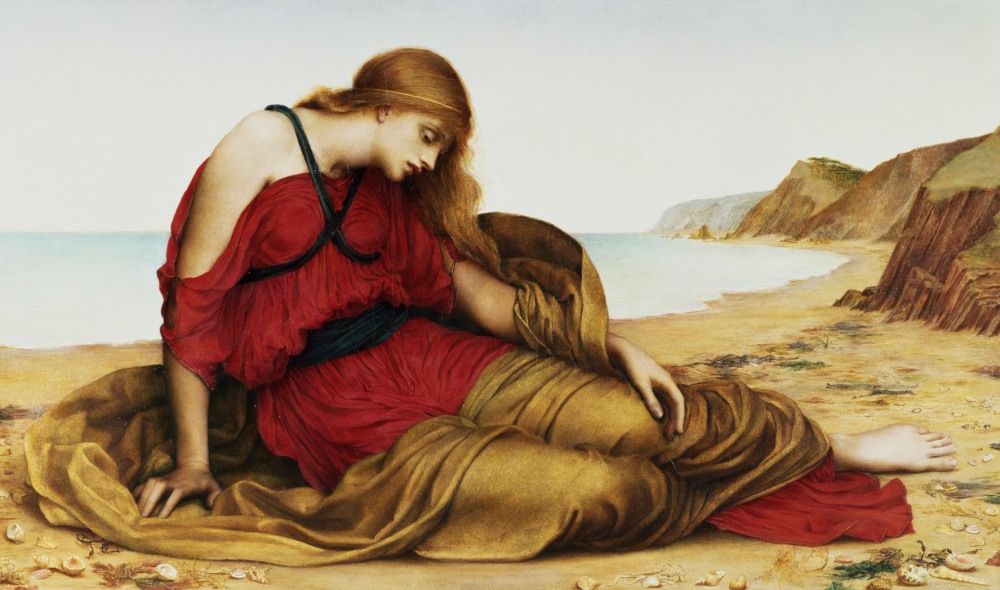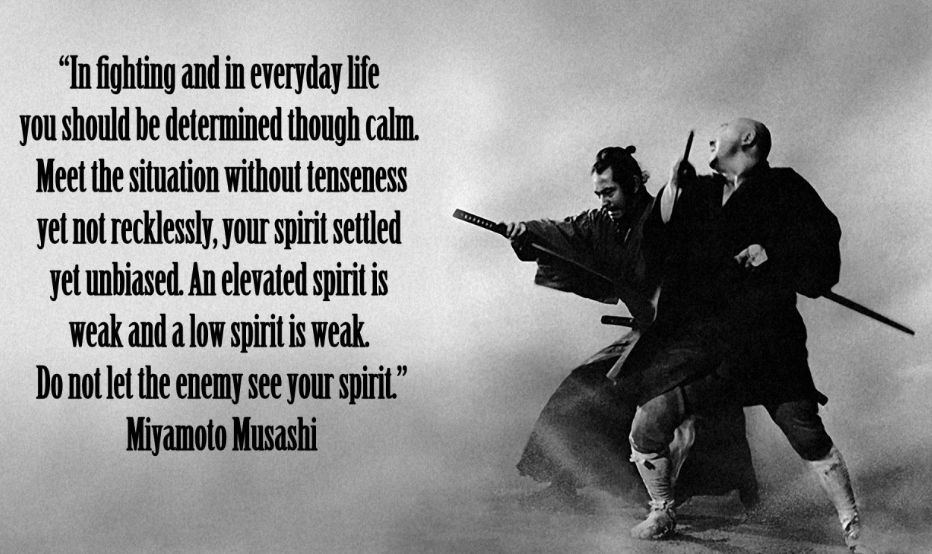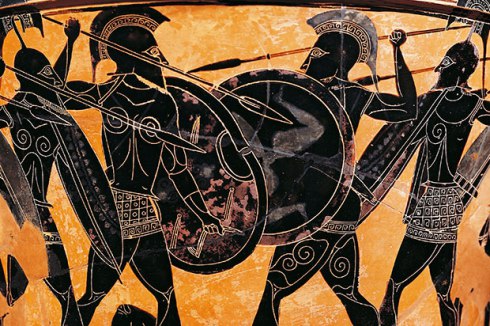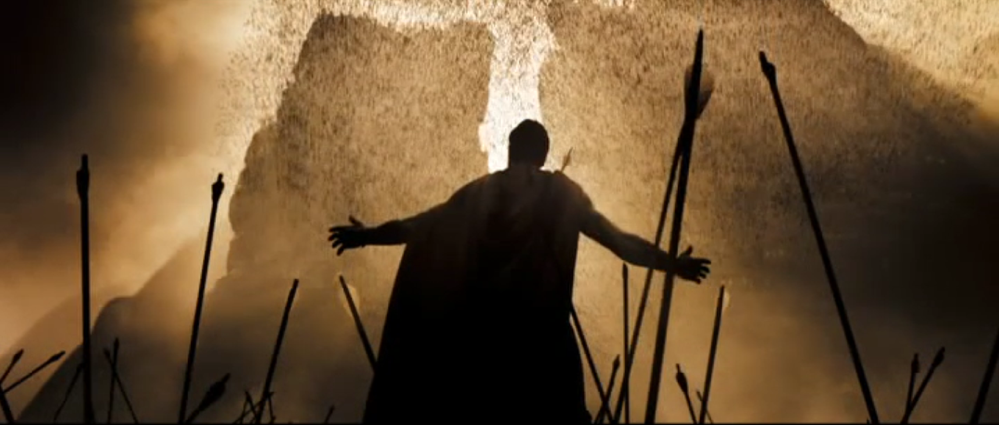
Try and tell me that fashion isn’t important.
Go on, I’ll listen……..
Tell me how it’s “just clothes” and taking an interest in shoes, different types of fabric, and fashion designers is just girly and stupid.
The fact is that fashion is vitally important, but not everyone realises it (or at least not to its full extent)
Most people see clothes as just necessity and don’t have strong opinions with regards to what they wear, or don’t see what they wear as holding some form of deeper and intelligent statement.
“Just jeans and a t-shirt will do, maybe a hoodie if it gets a bit chilly.” That seems to be the approach of many. Convenience and simplicity, the choice of t-shirt might be one branded with a particular slogan or symbol; which is still a conscious fashion choice. You might want to wear a t-shirt with your favourite band’s logo, characters from a film or tv show, or maybe it’s just a shirt that does nothing more than tell us where you bought it from e.g. Lacoste or Lyle and Scott.
There are a lot of people who will always purchase the latest fashion trend, they MUST have whatever the media and the celebs tell us to wear, and god forbid should they wear anything that was in fashion more than 12 months ago! However, despite these people always being ‘on trend’ and appearing to be fashionable, they’re not always the ones who truly appreciate what they’re buying into. They just want to make sure they conform and look good, fearful of not being cool and having the piss taken out of them. Clothes are easily expendable and fast fashion is their bitch! Wear something once and throw it away because people have seen you in it now, it’s already been used in an Instagram post so, can’t wear that again!
Finally, there are those who really love fashion, they appreciate true style and the timelessness of certain pieces. They know where influences come from and can see how we have got to where we are by respecting history. These people will embrace new trends, but not let go of the past, because it’s the past which made the present. They can spot a Dior silhouette and would give their left ear for a Philip Treacy hat.
True appreciation for style means that you will present yourself according to your own personality and using the archives of fashion you can create unique beauty.
Taking an interest in fashion and fashion designers isn’t a non-subject.
Coming from an old public school and classical education background I know a “Mickey Mouse subject” when I see one. Going to college or university to study subjects like kite flying are not *real* subjects. Fashion on the other hand is a subject, it’s art history. It encompasses design, culture, creation, art, politics, sociology, and history (lots of history).
Let me briefly (but not quite so briefly) give you an insight into what I am failing to get across to you….
History
Fashion tells a story; it’s the past and the future. We all know it goes in cycles. I was born in the 80s and I am now seeing the big high street shops sell styles and clothing that I wore as a kid. The current trend of ripped jeans, a t-shirt, Converse,and a plaid shirt tied around the waist is highly reminiscent of the Grunge movement in the early – mid 90s. The only thing that grinds my gears about the modern variation of this look is that a lot of the band t-shirts are being worn by people who’ve never heard of The Ramones (but they’ll wear the shirt because Urban Outfitters told them to).
The history of fashion is known to us all. If I say Tudor Period to you I guarantee you think of men wearing tights with short poofy trousers, and a ruff around their neck, you’ll picture Henry VIII or Shakespeare. You know that the 1920s gave us Flappers and there was once a time when bullet bras werefashionable (yikes).
Throughout history (but more importantly the past century) pop culture, music, and fashion have all moved in the same circles and occasionally they get together to make the next fashion forward love child.
In the 1960s there were the MODs who were massively influenced by bands like The Who, The Rolling Stones, and Rod Stewart. Their fashion was a departure from the Teddy Boy look of the 1950s which came over from America; instead they turned to Italian, slim fit suits, parka jackets, and polo shirts. They shunned branded clothing, had attention to detail, and an eye for classic design.
The 1970s gave us hippies, punk, and disco. We are all familiar with huge afro hair, bell-bottomed trousers, bright colours, and platform shoes. Similarly, we are also aware of the mohawk, bondage trousers, monochrome, and army boots. When it came to hippies and disco the silhouette was tight on top and loose on the bottom. Due to a shift in women’s rights there was a change in what the market and our new society were asking for. Yves Saint Laurent was one of the designers who embraced change and designed stylish trouser suits purposefully tailored for women.
Punk music was the anarchistic child of MODs and Rockers. Bands like the Sex Pistols, Blondie, and The Clash came onto the scene in the latter part of the decade and their followers were a fashionably hostile gang who screamed on the battlefield of style. Clothing was mainly torn and shredded. Safety pins were a popular accessory and often used to purposefully hold together ripped garments, but they were also pierced through the ears or nose. Offensive slogans and images were printed on t-shirts; including swastikas. Savage music bred savage fashion, these kids were angry, and the establishment was their punchbag. 
They were sick of the perceived excesses and pretension of mainstream culture. The gender boundaries were sometimes blurred as women shaved their heads or kept their hair short. Bondage trousers, fishnets, and spiked dog collars also became part of the punk movement; items which would be picked back up again by Jean-Paul Gautier and the goths of the 1990s.
The punk movement did continue into the 1980s, but it was dominated by 80s FASHION!!! I love all things 80s, everything was big and that is never a bad thing. Huge shoulder pads, big hair, lose fitting clothing, mohair jumpers, jumpers with gawdy designs that are so awful they’re amazing, and leggings (I legitimately don’t know what I would wear if we didn’t have leggings, I can’t even remember a time before leggings!). Music at the time was Madonna, Duran Duran, new romantics like Boy George and Adam Ant gave a huge creative boom to artistic expression and androgyny. Style emphasised excess, expensive clothes, and heavy accessories. Costume jewellery and large faux gold earrings were popular, coupled with garments dripping in sequins. The colour scheme of the 80s was very bright and the whole decade seemed vibrant. Women were now no longer an unusual sight in the workplace and power dressing was born. Ever seen the film Working Girl? That perfectly showcases the 80s woman who has finally found power and equality (or even dominance) over men, Sigourney Weaver’s character is iconic. The New Romantics used individualism and creativity and presented flamboyant androgyny. Popular items across both genders would be dramatic makeup, ruffled poet shirts, hussar jackets, waistcoats, crushed velvet, and Regency era fashion.

I was born in 1985 which means that by the late 1990s I was only just starting to become self-aware with regards to clothing and as time went on I could start to make my own fashion choices as opposed to the Laura Ashley filledwardrobe my mum would force me to wear. As a 90s kid we were influenced by boybands, grunge and goth. We saw the rise of the tom boy (me) and denim found its resurrection moment; reaching its final form with double denim! Style wasn’t as outlandish as it had been in the previous decade, we’d tried to smarten ourselves up a bit, but also make ourselves fitter. The revolution that was boy and girl bands forced the image into the media of super fit, skinny (in the case of the girls), and very muscly (guys). Continuing the 80s aerobic fashion trend, the 90s included sportswear, tight vest tops, ANYTHING with Calvin Klein written on it, six packs, and those Adidas poppers (yes, I had a pair)! The 90s gave us the size zero body, an unhealthy must-have which is a painful subject for another blog.
As previously mentioned there was the darker side of 90s fashion. Grunge music was a remnant of punk, but also had relatives in rock music. Nirvana were the main grunge band, until the untimely death of Kurt Cobain in 1994. Following them we had Soundgarden and Pearl Jam. Grunge then evolved quickly and the next thing to come along was Metal and all its subgenres (of which there are loads). Slipknot, System of a Down, Marilyn Manson, KoRn, and Linkin Park are just a few bands I could mention. In the fashion world this rekindled the shock factor of Punk trends and we were back to wearing all black, tearing our clothes, being offensive, and wearing clothing that doubled us as weaponry. I belonged to the goth/alternate crowd and I would either wear black bondage trousers or enormously baggy jeans, a tight t-shirtwith some form of slogan on it, elbow length fishnet gloves, a green army shirt with a German flag on the arm, a spiked dog collar, and a miserable face. I have since lost the German army shirt and bondage trousers, but still own the rest (and more). I happily still wear the things I can still fit into; I wonder where by baggy jeans are……
From about 2003 onwards fashion and music don’t seem to have such a close relationship anymore, they don’t work in tandem as much. It’s as if they’re on a running track where one is sprinting and the other having a casual jog; occasionally they cross paths, but mainly it’s music which is moving too fast, it’s fickle and ever changing. Fashion will now tend to pick up trends from individuals in the media andpop culture derived from film and TV instead of music.

TV shows such as Peaky Blinders have had a direct influence on men’s fashion (including their hair). The popularity of beards and that ‘peaky blinders haircut’ had already begun not long before we were introduced to Thomas Shelby. Shops like Master Debonair are taking off and finally giving us well dressed and, let’s face it, sexily dressed men, thank you!
Even more recently we are seeing a huge movement by way of abandoning fast fashion and breathing life into second-hand clothing; a drive which, when you investigate it, flies the flag for the environment and political rebellion (and our pockets).
Now, I know I have so far stuck to the correlation between music and fashion throughout the decades, but that is important to demonstrate the importance and effect fashion has on society, culture, and you can pinpoint a period by looking at what someone is wearing.
Fashion history does go deeper, obviously.
If you watch the documentary films which have been made about Alexander McQueen, Vivienne Westwood, and Manolo Blahnik you will see that these designers don’t just blindly design without the inspiration of centuries gone by at their back. They know the tight engineering that goes into making a corset, they understand what differences can be made according to the structure of a shoe, and they appreciate the reminiscent beauty in a powdered wig. Alexander McQueen looked deep into his Scottish heritage, the “ethnic cleansing” carried out by the British in the mid-18th Century, and thefabrics and styles of the time and region in preparation for his Highland Rape collection. Whilst heading up Givenchy he took inspiration for his first collection from Ancient Greece and Rome. Inspired by the Givenchy logo he was automatically drawn to graceful white and gold garments draped elegantly to create pieces that could have come from Mount Olympus itself. These people know their shit.
These artists and creators can turn swathes of fabric into whatever they want, they are gods!
Their work can touch you on numerous levels.
Self-expression and Identity
Fashion is personal identity and a way of letting people know who you are from a distance; they can merely walk past you in the street and get an impression of who you are.
Even in work where we need to conform to corporate dress code and look like we all came out of the same smart casual zombie factory; people still let their personal fashion show. You might choose to always wear fabulous shoes, coloured shirts instead of white, or you could pick a sexy tweed number with elbow pads over a plain black suit.
You subconsciously think about fashion more than you realise.
Even for someone like me who has a mixed self-image that changes with the seasons and my mood, fashion is still my way of expressing who I am on that particular day. I still have my spiked dog collar, New Rock boots, and Marilyn Manson hoodie; they are the solid foundations upon which my “goth wardrobe” is built on.
To see people who go against the curve and dress how they want is so heart-warming. It’s so refreshing to see, in an oceanof people all wearing the same thing, someone stand out. I applaud that person who has the balls to wear what they feel.
Why should we be afraid to dress how we want and work our look on the catwalk that is life? We don’t do the same when we open our mouth; we openly discuss our hobbies, interests, opinions, and things we love. If you like something, wear it. Why should we be subdued and follow the herd when it comes to what we wear?
Fashion is a double-edged sword I guess. We are all sold the same thing from numerous shops, they all peddle the same trend with only slight variation. We want to fit in and be accepted by everyone which leads us to buy the latest pair of trainers or cry profusely because crop tops are in, but you’re a fat mess.
We have an unshakeable need to be part of the in-crowd, whilst simultaneously screaming “Nope. I am my own person.I’m a grown up human and I do what I want”. So, then we go for an outlandish fashion choice, maybe it’s something still bought in a high street shop, but it’s garish (for you) and you’ve no idea what to wear it with, but you try anyway. You scamper confidently out of your front door, proud of the fact you have chosen to wear something that made your personality feel all warm and fuzzy. Fingers crossed it all goes well, and your new outfit is met with positive responses and it just snowballs into a beautiful confidence that inspires you to continue wearing what you want because it’s who you are.
That’s how it should be.
“the worst fashion faux pas is to look in the mirror and not see yourself” – Iris Apfel
Politics & Anarchy
I remember being stood outside a Vivienne Westwood shop when I was about sixteen just in awe at the most beautiful suit I have ever seen; a white high collared shirt, shiny orb buttons, a red tartan asymmetric skirt with a jacket to match – the whole thing went together perfectly and held itself almost without the need for a mannequin – exquisite. I looked like the last person in the world who would appreciate and be moved by high fashion, dressed like something that just crawled out of Azkaban, but don’t forget that Vivienne Westwood was a huge part of Punk history and therefore a huge influence on myself and the pop culture I was embodying.  Even though her designs are now far removed from the clothes she made for the Sex Pistols back in 1977 I still adore her style; the tartan, the non-conformity by using asymmetry, the tight and perfect fit of the jacket, the fact that even though this is something you could wear in a board room it still screamed “fuck you!”. I’m confident in saying that a lot of people who know the name of Westwood, maybe have one of her bags slung over their shoulder, or just wear a t-shirt because it cost a lot of money and want to show off are totally ignorant to the incredible woman behind it all and would never think that her current work is in any way related to where she started; rising to fame by defacing the image of the Queen and then becoming a Dame.
Even though her designs are now far removed from the clothes she made for the Sex Pistols back in 1977 I still adore her style; the tartan, the non-conformity by using asymmetry, the tight and perfect fit of the jacket, the fact that even though this is something you could wear in a board room it still screamed “fuck you!”. I’m confident in saying that a lot of people who know the name of Westwood, maybe have one of her bags slung over their shoulder, or just wear a t-shirt because it cost a lot of money and want to show off are totally ignorant to the incredible woman behind it all and would never think that her current work is in any way related to where she started; rising to fame by defacing the image of the Queen and then becoming a Dame.
“I’m bored with fashion and much more concerned about the health of the planet. We barely have a generation to change things before it’s too late!”
Vivienne has now handed over design of her house’s fashion to her husband and long-time collaborator, Andreas Kronthaler in order for her to focus more on her furious campaign for our climate. She fights global warming and keeps a blog called Climate Revolution.
“We have an enormous global problem; our politicians are not listening to our scientists. We have barely 20 years to stop things, otherwise we shall reach a tipping point and we can draw a line across the earth and everywhere below Paris will be uninhabitable”
Westwood also works via the Cool Earth Movement, helping to save the rainforest not by buying it, but helping indigenous people to get legal documents to own their piece of forest; a campaign that could save the land for mere hundreds of thousands of pounds (not that much when you think about it).
She has even gone so far as to say that we should buy less, choose well, and make it last. Or even better, don’t buy at all! A revolutionary stance for a fashion designer, but she is that concerned over the state of our planet, the toxic mass production of items, and the throw away attitude of cheap, fast fashion that she has even said “I wish they wouldn’t” when asked in 2012 whether she wanted people to buy her latest collection. She promotes art and culture over spending and waste.

It takes a certain type of person to not just wear Westwood, but to wear it and evoke the emotion and history she puts into her work. She is one of my biggest heroes and I love her.
Another personal hero of mine is Alexander McQueen. He could create things that will literally make you cry. Flawless pieces which came from a mind which seemed to have a higher level of vision and imagination. If you can find a spare 90 minutes to watch the McQueen documentary film on Netflix I urge you to do so!

McQueen was often branded as a misogynist, but he was the complete opposite. He worshipped women and put them high up on the biggest ivory pedestal he could envisage. The reason so many critiqued his work as anti-women was because his shows made the audience feel uncomfortable, and that was the point! He constantly seemed to focus on the victim, in his Highland Rape show and Jack the Ripper Stalks His Victims his aim was to actually make women look powerful, turning them into menacing creatures. He wanted people to fear the women who wore his clothes. He confronted violence against women, something which he had witnessed his sister be victim of.
His collection simply entitled No.13 challenged the limitations of conventional beauty and we saw Paralympic athlete Aimee Mullins walk the runway in a pair of hand-carved elm wood prosthetic legs.
Bringing forward the issues of mental health, insanity and questioning the boundaries of normality McQueen gave us his Voss show. The audience were sat in a three–sided auditorium, so that they surrounded the area where the models would be walking, with mirrored glass separating them from the performance. He made everyone wait an hour before the showbegan and the audience had no choice but to sit there and stare at their own reflection in the glass before them, uncomfortably looking into their own being whilst waiting for the lights to come up. Models like Erin O’Connor mimicked inmates of a mental institution and interacted with their reflections in the mirrored wall of their stage. O’Connor wore a razor clam encrusted dress and McQueen had instructed her to break the shells off, she left the stage with blood dripping from her hands. The grand finale saw a glass box (which had been present centre-stage during the entire show) break open to reveal a voluptuous nude in a gas mask reclining on a chaise longue, covered in moths. Glass shards and moths flew across the room in a dark and chilling scene inspired by Joel-Peter Witkin’s work Sanitorium (1939).
McQueen’s work is something I find hard to put into words, it’s more of something you feel. He manages to make you feel strong emotions through his work. Something that sounds so strange if you say it simply, “look at this dress, it’ll make you cry”. This level of talent and the issues he brought forward were controversial genius at its finest.

Other instances where fashion has been more than just clothes
During World War 1 women were prompted to work in factories for the first time and therefore required to wear trousers. This was revolutionary in introducing not only trousers to the female wardrobe, but introducing the military cut to a realm outside of the battlefield.
In 1998 supermodel, Iman interviewed fellow model Waris Dirie to bring attention to the issue of Female Genital Mutilation (FGM) for Vogue Magazine. The pair are both from Somalia and Waris is a victim of FGM. They were photographed beautifully dressed in bright colours and traditional Somali inspired dresses, looking strong and regal.
In his Spring collection of 2016 Kerby Jean-Raymond used fashion to highlight the Black Lives Matter campaign and also addressed the problems of police brutality.
John Galliano is a visionary and sparks debate beyond the catwalk by using social and historical issues as his weapons. The Dior couture collection of 2000 was inspired by homeless people and Galliano dressed his models in baggy clothes with torn linings, accessories like whiskey bottles and safety pins. New York times famously commented on the collection by saying, “which is worse? A Paris fashion designer who wants to look at the homeless as aesthetic objects, or a New York mayor who doesn’t want to look at them at all?”. I have an inkling that Galliano’s collection inspired and was parodied by the film Zoolander when the character, Mugatu delivers a show called Derelicte.
Demna Gvasalia brought raw chic to the catwalk using bold cuts and non-conventional design in the collection created for Balenciaga. The show was reminiscent of post-Soviet 90s evoking economic instability, political uncertainty, and disappointment in Soviet ideals. The oversized handbags alluded to shuttle traders and the IKEA business model, turning the democratisation of fashion on its head.
Fashion allows even the most unpolitical of us to join a cause in our own pedestrian way.
After all of this waffling on, and let’s face it, if you’re reading this you have survived just under 4,000 words of absolute twaddle (I applaud you), but no, after all of this rambling about I hope that I have somehow managed to convey the importance of fashion, even if it’s only slightly!
I wanted to touch more on how designers are experts in their craft and the deeper history of fashion and how they bring it all forward to us, but maybe another time.
I suppose the point I am trying to make is that day-to-day fashion, what we all throw on before leaving the house, doesn’t have to come from fashion houses like Gautier and Chanel, you don’t have to shun modern trends and ignore popular high street brands, I’m not telling you to deny yourself of what you like. What I am saying is that fashion is often cast aside without consideration as being unimportant, but there is a deeper meaning to it.
Wear what you want. Appreciate where it comes from. Learn your pop culture history. Show everyone who you are. But try to heed our lady Westwood’s words and make it last!!







 Even though her designs are now
Even though her designs are now 








